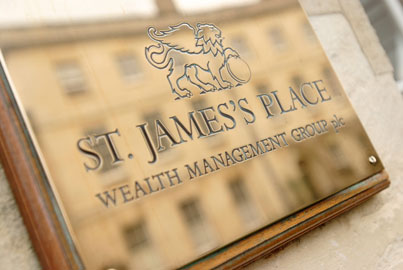Blog post written by Luis Villar, Chartered Wealth Manager, McKenzie & Co Financial Consultants, Senior Partner Practice of St. James’s Place Wealth Management.
Pension schemes have always been tax-efficient, but historic restrictions on contributions prevented them from being an important constituent of an investment portfolio for many successful people.
What makes pension contributions unusual is that tax relief is available on the investment and on the benefits. Personal contributions are payable net of basic rate tax of 20% and some are relievable against the highest marginal rate of tax.
So if a member pays a contribution of £24,000 net of basic rate tax, the scheme will invest £30,000. Assuming that 40% relief is available on the whole contribution, the effective cost of the contribution will be reduced by a further 20%, or £6,000 in the example, to £18,000. The additional 20% of tax relief is obtained by submitting a self-assessment tax return.
Just to emphasise the advantages of pension arrangements, 25% of the fund is then available as a tax-free cash sum from age 55 (this will rise to 57 in 2028). If you are a higher rate taxpayer, submitting a self-assessment tax return could result in an additional 20% of tax relief.
The pension tax rules can be summarised as follows:
• Personal contributions are relievable against your Income Tax.
• They are payable net of basic rate tax with any higher rate relief being claimed via the self- assessment process.
• Employer contributions are a deductible business expense.
• Employer contributions are tax-free for the employee, provided they do not exceed the annual allowance.
• Pension funds are free of all UK Income Tax and Capital Gains Tax.
• Generous tax-free cash sums of 25% are available on retirement; and even more generous tax-free benefits are available to dependants upon your death, should death occur on or before age 75. The tax benefits of a pension will depend on your circumstances and tax rules, both of which can change.
MAXIMUM CONTRIBUTIONS
There is an ‘annual allowance’ of contributions on which you will not be taxed, which is £40,000 in the 2021/22 tax year. From 6 April 2020, anyone with total income from all sources above £240,000 will see their annual allowance reduced by £1 for every £2 of income above £240,000. The maximum reduction is £36,000 – reached if your income is at least £312,000 – which would result in an allowance of £4,000.
It may, in certain circumstances, be possible to ‘carry forward’ unused allowances from previous years and as a result benefit from an increased annual allowance. This is, however, potentially complex and advice should be sought.
Within the annual allowance there is a limit on personal contributions that qualify for tax relief. This is the greater of £3,600 or 100% of earnings.
INVESTMENTS
Subject to the rules of the scheme, there are no real restrictions on investments. However, there may be severe tax charges for investment in residential property or ‘tangible moveable assets’, whether it is direct or indirect. Some types of pension plan may borrow, within limits, to purchase an asset.
PENSION BENEFITS
These comprise a tax-free cash sum and income. The type of income chosen determines how long it will be paid for. Benefits can generally start to be taken from age 55 (this will rise to 57 in 2028). There is no link between working status and timing of benefits. After age 55, the member may take benefits when needed, in full or in part.
It is possible to take the cash sum without the need for any income. The income may be provided by way of annuity purchase or withdrawals from the fund or a combination of both. The introduction of benefits may be phased.
The cash sum will usually be tax-free and the pension will be taxed as earned income (without any liability to National Insurance).
The lifetime allowance for 2021/22 is £1,073,100. Any fund in excess of this allowance will be taxed at the point when benefits are taken, at a rate of 55% on the excess of the fund over the lifetime allowance when taken as a lump sum. It may be possible to apply for protection from the lifetime allowance, depending on the value of your pension funds; if there have been no contributions to your pensions since the start of the 2016/17 tax year.
DEATH BENEFITS
In the event of your death before age 75 your pension fund may be passed to any beneficiary tax- free. This applies whether the fund is taken as a lump sum or as income. In the event of your death at 75 or over, it will be possible for your pension fund to be passed to any beneficiary. If your beneficiary receives income payments, the beneficiary will pay Income Tax on the amount they receive at their marginal rate. Alternatively, it will also be possible for a beneficiary to take the pension fund as a lump sum taxed at the recipient’s marginal rate.
TAKING BENEFITS – THE CHOICE IS YOURS
One of the big differences that legislative changes have made is to put investors in control of their long-term wealth planning again. Here are some of the main changes worth considering:
• There is no requirement to purchase an annuity with the pension fund.
• The fund, or any part of it, may be used to purchase an annuity that can continue, and therefore provide an income, after your death.
• The fund can be actively managed while you take an income.
• The arrangement can provide an income or a lump sum on death that will be tax-free if death occurs before age 75 and is an important part of Inheritance Tax planning.
• You need not retire to take benefits (and will not be required to take benefits at retirement).
This level of freedom marks a radical step towards returning control of pension plans to their investors.
Taking an income from the fund will reduce the size of your pension fund and the investment growth may not be sufficient to maintain the level of income you wish to draw. If you withdraw money at a rate greater than the growth achieved by your investments, your remaining fund will reduce in value. The level of income you take will need to be reviewed if the fund becomes too small – this is more likely the higher the level of income you take.
The income you receive may be lower than the amount you could receive from an annuity, depending on the performance of your investments.
The value of an investment with St. James’s Place will be directly linked to the performance of the funds you select, and the value can therefore go down as well as up. You may get back less than you invested.
The levels and bases of taxation, and reliefs from taxation, can change at any time. The value of any tax relief depends on individual circumstances.
McKenzie & Co Financial Consultants is an Appointed Representative of and represents only St. James’s Place Wealth Management plc (which is authorised and regulated by the Financial Conduct Authority) for the purpose of advising solely on the group’s wealth management products and services, more details of which are set out on the group’s website www.sjp.co.uk/products. The ‘St. James’s Place Partnership’ and the title ‘Partner Practice’ are marketing terms used to describe St. James’s Place representatives. McKenzie & Co Financial Consultants is a trading name of Mckenzie Wealth Management Ltd.





